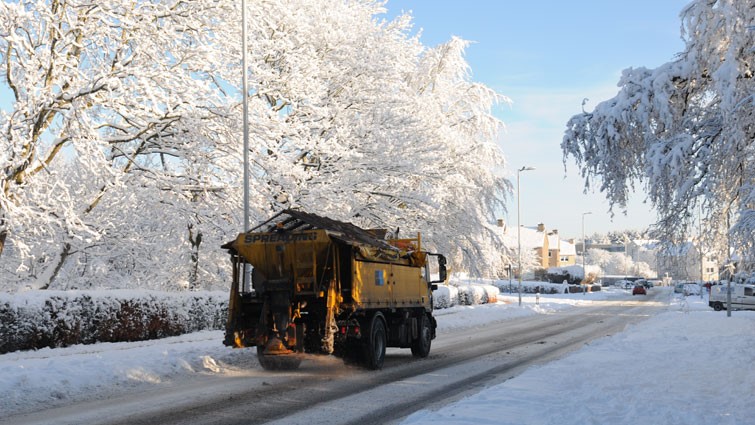Driving in winter requires a very particular set of skills
Published: Tuesday 4 November 2025

The second day of the council’s Winter Awareness Week looks at driving in wintry weather.
Road conditions can be tricky, especially – but not only – during periods of extreme weather. However, the council’s gritter drivers head out into the worst of the weather, doing everything they can to make conditions as safe as possible.
For the fifth year in a row, we are providing a dedicated gritter tracking map on our website. This allows you to see, in real time, the routes our gritters are taking. It even shows the names of the gritters that were chosen by South Lanarkshire pupils in our recent competition.
Councillor Robert Brown, Chair of the council’s Community and Enterprise Resources Committee, said: “Hopefully people are now used to our gritter-tracking map, which lets you see exactly where our gritting fleet is at any given point in the day. To those who haven’t used it, I can highly recommend it.
“The dedicated drivers are out there no matter the road conditions, so although this is a fun and interactive way to keep in touch with what is going on, it also has a serious message.
“Our staff deserve a huge amount of credit for their hard work, professionalism and dedication in working to ensure our roads are as safe as possible in the face of the worst the elements can throw at us.”
Driving always requires constant care and attention but, during winter, there are specific driving skills that also need to be used.
Councillor Brown added: “Although our tips will come in handy, the first consideration is that you always drive to the condition of the road.
“Depending on the severity of the weather, it may even be advisable to not use a vehicle at all unless the journey is an emergency or absolutely essential.
“Please remember that the most important thing at all times is your own safety and that of your passengers and other road users.”
Snow and ice
- Always clear snow and ice from your vehicle before driving – snow sliding off the roof or bonnet could block your view and be a danger to yourself and other road users
- Avoid harsh steering, braking and acceleration, especially when there is a danger of black ice
- Remember that even after gritting has taken place, ice and snow may still be present. It takes time for grit to take effect, especially if roads are quiet
Gritters
- You can now follow our gritters in real time on our website, and can spot the names of the gritters that were chosen by South Lanarkshire pupils – Gritting Routes
- Stay back from gritters and don’t overtake them
- Even after gritters have treated routes, ice can still form afterwards
Fog
- Use dipped headlights and your fog lights – high beam does not make it easier to see
- Don’t speed up if visibility suddenly improves, because more fog patches are likely
High winds
- High-sided vehicles have particular difficulties and may swerve suddenly due to severe gusts, especially along exposed sections of roads and bridges
- Keep a safe distance especially when passing a high-sided vehicle
Heavy rain
- Watch out for water ponding. If your vehicle loses grip, or begins to aquaplane, take your foot off the accelerator to slow down – do not use the brakes
Top tip
- If you get stuck in thick snow, use the highest gear you can to move slowly backwards and forwards to try and get out.
For more information see:
Roads in Winter pages on the council website
Ready Scotland for advice on winter at home, travelling, at work and in the community
Driving in Bad Weather from Transport Scotland
5 November 2025
Huge boost in funding to clean up South Lanarkshire
5 November 2025
A little planning makes a big difference for winter travel
5 November 2025
Have your say on savings and your services
4 November 2025
Driving in winter requires a very particular set of skills
3 November 2025
Road improvements for Lesmahagow
3 November 2025
We all need to prepare for winter
30 October 2025
Excellence and innovation recognised in award finalists
30 October 2025
All composter bins now allocated in final extension to pilot project
29 October 2025
Survey to ensure young people’s voices are heard
28 October 2025
Ownership of Thankerton Hall is placed in Trust















